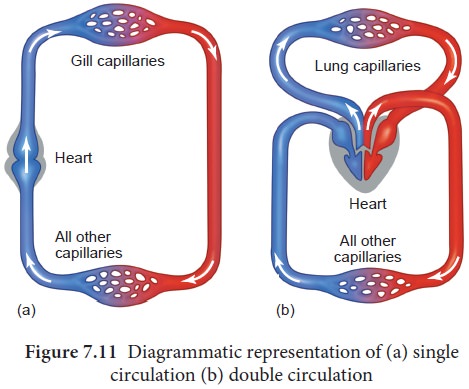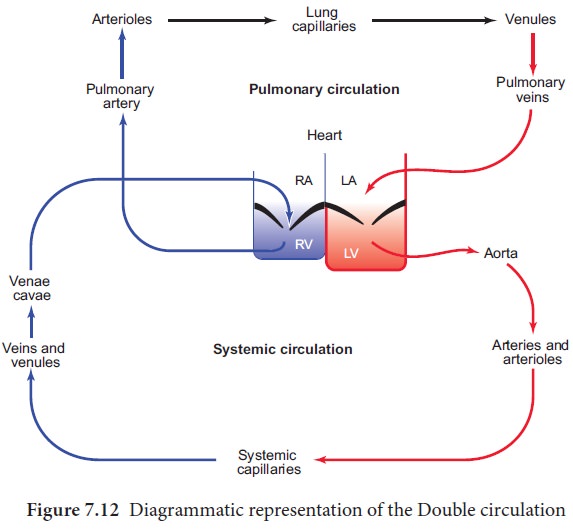Human | Zoology - Double circulation | 11th Zoology : Chapter 7 : Body Fluids and Circulation
Chapter: 11th Zoology : Chapter 7 : Body Fluids and Circulation
Double circulation

Double
circulation
Circulation
of the blood was first described- by William Harvey (1628). There are two types
of blood circulation- in vertebrates, single circulation and double circulation
which is shown in Figure 7.11 (a and b) and 7.12.


The blood
circulates twice through the heart first on the right side then on the left
side to complete one cardiac cycle. The complete double blood circulation is
more prominent in mammals because of the complete partition of all the chambers
(Auricles and ventricles) in the heart.
In
systemic circulation, the oxygenated blood entering the aorta from the left
ventricle is carried by a network of arteries, arterioles and capillaries to
the tissues. The deoxygenated blood from the tissue is collected by venules,
veins and vena cava and emptied into the right atrium. In pulmonary
circulation, the blood from heart (right ventricle) is taken to the lungs by
pulmonary artery and the oxygenated blood from the lungs is emptied into the
left auricle by the pulmonary vein.
Completely
separated circuits have an important advantage. Different pressures are
maintained in the pulmonary
Why is this advantageous? In the lungs the capillaries
must be very thin to allow gas exchange, but if the blood flows through these
thin capillaries under high pressure the fluid can leak through or ruptures the
capillary walls and can accumulate in the tissues. This increases the diffusion
distance and reduces the efficiency of the gas exchange. In contrast high
pressure is required to force blood through the long systemic circuits. Hence
the arteries close to the heart have increased pressure than the arteries away
from the heart. Completely separated circuits (pulmonary and
systemic) allow these two different demands to be met with.
Related Topics